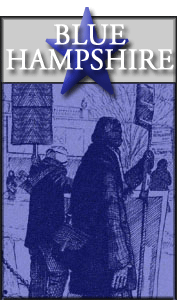(Important arithmetic from Elwood. And what does "that House" really mean? - promoted by Mike Hoefer)
Our statewide news media has not been much help on this simple problem in arithmetic.
On May 4th the Right to Freeload Work for Less bill passed the House by a margin of 225 Y, 140 N. The Governor has said he will veto this bill.
Art. 44. [Veto to Bills.] Every bill which shall have passed both houses of the general court, shall, before it becomes a law, be presented to the governor, if he approves, he shall sign it, but if not, he shall return it, with his objections, to that house in which it shall have originated, who shall enter the objections at large on their journal, and proceed to reconsider it; if after such reconsideration, two-thirds of that house shall agree to pass the bill, it shall be sent, together with such objections, to the other house, by which it shall likewise be reconsidered, and, if approved by two-thirds of that house, it shall become a law...
September 5, 1792
We have three vacant seats in the House today. With 397 members, 397 *(2/3) = 265 Yeas needed.
265 needed Yeas - 225 current Yeas = 40 new Yea votes, that the GOP leadership needs to pass their law to cripple unions.
32 members didn't vote on May 4th. So, if O'Brien gets every single missing member to support the anti-worker law - and nine of the 'Not Voting' members are Democrats - that's not enough. He also needs to get eight members who voted FOR workers on May 4th to flip and vote AGAINST them after the veto.
Here's the thing about vote-flipping. When you vote NAY the first time, you tick off the rabid right-wing base and please the moderates. (Pushing right-to-work isn't a New Hampshire issue: it matters to the ideologues.) If you flip, you tick off the moderates, even more that an original NAY would have (as a flipper, you can't melt into the crowd). But you probably don't win back the rabid ideologues. They'll never trust you again.
It looks to me like O'Brien has a pretty tough sell. Am I missing something?
|
